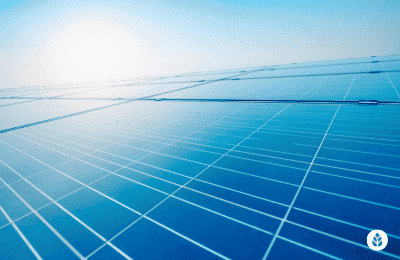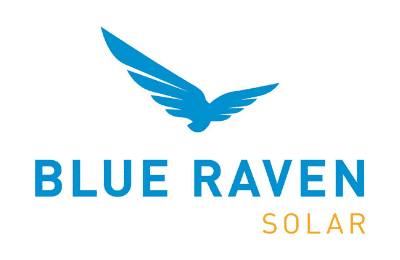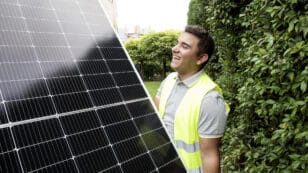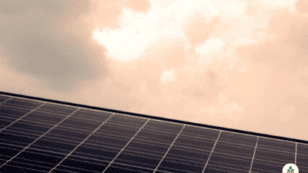
Is Solar Worth It in Massachusetts? (2024 Homeowner's Guide)
Here’s a quick overview of solar viability in Massachusetts:
- Massachusetts ranks 11th in the country for solar installations.*
- The average electricity rate is 27.46 cents per kilowatt-hour.**
- The average solar payback period is 8 years.***
- Homeowners are eligible for the Solar Massachusetts Renewable Target (SMART) Program and the federal solar investment tax credit (ITC).
- The average homeowner saves $48,909 over the lifetime of their solar system.***
*According to the Solar Energy Industries Association.1
**Data from the Energy Information Administration.2
***Calculated assuming the system is purchased in cash.
Each product and or company featured here has been independently selected by the writer. You can learn more about our review methodology here. If you make a purchase using the links included, we may earn commission.
Massachusetts ranks 10th overall in the nation for solar adoption, but the electricity consumption throughout the state is nearly 30% below average the U.S. average — around 602 kWh per month as opposed to the national average of 881 kWh. Since most of the financial benefit of going solar comes from savings on electric bills, some homeowners in the area are left to wonder if going solar is worth the investment.
Generally speaking, it is, but there are some things that might make your home not such a great fit for solar panels. Below, we’ll include all of the factors you need to consider to determine if solar is right for you. We’ll also discuss the many benefits of converting to solar in Massachusetts and some things you should be aware of as you move through the process of finding a solar installer and installing panels on your home.
To speak with an EcoWatch-vetted professional who can help you determine whether solar is worth it for your Massachusetts home, follow the links below.

Blue Raven Solar
Pros
- Industry-leading in-house financing
- Competitive pricing
- Excellent reputation
Cons
- Doesn't offer solar batteries (coming 2022)

Trinity Solar

Regional Service
Average cost
Pros
- Many financing options
- Family-owned and -operated
- Makes charitable contributions
- Relatively short workmanship warranty
Cons
- Limited service area

Momentum Solar
Pros
- Great warranty coverage
- Concierge service ensures steady communication
- Representatives are experts on local policies
Cons
- Slightly limited service offerings
- Only available in 11 states
Watch Below: Learn Which Solar Incentives to Claim in Massachusetts To Maximize Savings
How to Figure Out if Solar Panels are Worth It in Massachusetts
Installing solar panels proves to be well worth the investment for most Massachusetts homeowners, but converting to this clean energy source definitely isn’t for everyone. Below are some factors you should take into consideration when determining your home’s solar viability.
What’s Your Home Electricity Consumption?
One of the easiest metrics you can use to see if solar will benefit you is the amount of electricity your home uses on a monthly basis. You can usually find your average expenditure on your past energy bills. In general, homes that consume fewer than 500 kilowatt-hours per month aren’t ideal for solar panel installation.
However, in Massachusetts, where energy rates are some of the highest in the nation — around 27.46 cents per kWh as opposed to the national average of 16.79 cents — even slightly below this benchmark should mean solar is a good option for you. That’s because every kWh your solar panels offset is worth nearly twice as much as it would be in most other states. Most homeowners in the state use around 602 kWh monthly, which is above this cutoff, despite being well below the national average of 881 kWh per month. As such, most Bay Staters will benefit from solar from an energy usage standpoint.
How Much Is It To Go Solar in Massachusetts?
The price of solar in Massachusetts is usually based on a per-watt average, which hovers around $3.72 throughout the state. Unfortunately, this is significantly higher than the national average of $3.33 and makes Massachusetts one of the more expensive states for photovoltaic equipment.
With that being said, the low energy usage requires a 6.5-kW system, which is much smaller than average, leaving the total price to go solar at just $16,926 after the 30% federal tax credit. Solar panels provide more value for homeowners who have above-average energy usage or pay higher electricity prices. Although energy consumption is low in MA, electricity rates are abnormally high. Overall, this makes solar quite valuable throughout the Bay State.
What’s the Payback Period for Solar in Massachusetts?

With the average payback rate of 8 years and the high electricity rates in the state, Massachusetts residents can expect their panels to pay for themselves and then provide net savings that average around $48,909 — more than 30% higher than the national average of $31,513.
What Are Average Buy-Back Rates in Massachusetts?
Most states mandate an electricity buy-back program, also called net metering. Through interconnection via inverters, the policy allows solar customers to overproduce energy with their panels and sell the excess electricity generated back to the utility provider for a credit to their energy bill.
Massachusetts has an outstanding net metering policy that not only mandates the program for all solar customers but also guarantees you’ll be compensated for excess power at the same rate you pay when you pull energy from the electrical grid. This is about the best Massachusetts residents could ask for in terms of net metering, and it means most customers will have the potential to eliminate their electric bills entirely with the addition of an expensive solar battery to their solar project.
We should mention that net metering policies are getting downgraded across the country, most notably in California in 2024. California has long been the most solar-friendly state in the nation, but it recently cut the credit rate by around 75%, instantly making solar panels by themselves less valuable. The same is expected to happen in the future in other states, including Massachusetts, and eventually, the program will likely be discontinued.
In either case, solar batteries are probably going to become more of a necessity to see solar savings than the luxury they typically are now in areas with access to one-to-one net metering, like Massachusetts. Batteries increase installation costs by between $10,000 and $20,000, so that would be a big deal in terms of upfront investment.
Now is the best time there has ever been to go solar in Massachusetts, as you can lock in the current retail rate for NEM credits. If you wait, your long-term savings will likely decrease because you’ll need to invest in batteries as well.
How Much Sun Does Your Roof Receive?
Solar panels work by converting solar energy to electricity that you can use in your home, which means exposure to sunlight is required to generate power and save you money. Therefore, homes in areas where sunlight is abundant are better options for solar panel installation. Massachusetts gets around 197 sunny days per year, which is below the national average of 205.
MA is far from the best state in terms of available sunlight, but it’s about average. You will need to assess your home on some individual factors as well, though. Among these are the direction your roof faces and shading on your roof. In the US, south-facing roofs are, by far, the best for solar panel installation, while some west-facing roofs are suitable as well. Shading on your roof from trees, buildings or other structures will reduce the sunlight and power production and, therefore, the overall value of your panels.
What’s the Outlook on Solar in Massachusetts?
Solar energy is widely accepted in Massachusetts by homeowners and legislators alike. The state ranks 11th in the nation for solar adoption, with residential solar installations rising year over year for the past five and community solar and commercial solar maintaining a solid foothold in the state as well.
The widespread acceptance of solar is largely due to the state’s Renewable Portfolio Standard (RPS) goals, the favorable net metering policy, the excellent statewide solar incentives and the high electricity rates in the area. It’s likely that the solar market in Massachusetts will only continue to grow in the future.
While the market is expected to continue to grow, we do expect to see a decline in net metering, specifically, as this perk has been getting downgraded in other states.
Benefits of Solar Energy in Massachusetts
For Massachusetts residents who decide that solar is a good investment for their home, there are a number of benefits they can enjoy when they do convert to this renewable energy source. We’ll discuss the most appealing solar benefits in MA below.
Electricity Bill Savings
With the fourth highest electricity rates in the nation, the savings provided on energy bills will naturally be the most enticing benefit of going solar in Massachusetts. The average MA resident pays around $165.31 per month for electricity. Thanks to the outstanding net metering policy in the Bay State, eliminating your electric bill is a distinct possibility, meaning you could save $1,983 on energy annually. The average Massachusetts solar customer saves around $48,909 over the lifetime of their solar PV equipment, and that’s after the panels have paid for themselves. Plus, going solar basically lets you lock in a lower electricity rate for 25+ years, which means you can plan and budget more effectively.
Lower Taxes & Access to Other Incentives
Solar power systems are so popular in Massachusetts in large part because of the enticing solar incentives available in the state. Perhaps most importantly, all residents will have access to the federal solar tax credit, also called the ITC. This is a credit to your income taxes in an amount equivalent to 30% of your total solar panel system expense. In Massachusetts, the ITC is typically around a $7,254 credit. There are several state solar incentives in Massachusetts available as well:
- Solar Massachusetts Renewable Target (SMART) Program: The SMART Program provides a solar rebate for every kilowatt-hour you produce with your system. This solar rebate program is a massive and ongoing benefit that can help pay off your solar equipment and maximize your return on investment.
- Massachusetts Solar Tax Exemption: This is a sales tax exemption that prevents you from having to pay state sales tax on photovoltaic equipment and installations.
- Net Metering: As mentioned above, net metering is mandated in Massachusetts, and the Public Service Commission guarantees you’ll be paid retail rates for all excess power you send to the grid.
Home Resale Value Increase
Solar panels increase your home value quite significantly, which is another important benefit to consider when going solar. According to research conducted by Zillow, the average home in the US becomes about 4.1% more valuable with the addition of a solar electric system.3 Given the average home value of $588,621, most homes in the state will jump up in value by around $24,133!4 This benefit is one that is only available if you purchase your solar array with cash or use a loan to pay for panels. Solar leases and power purchase agreements are not as appealing, in part, because they don’t provide a boost to home value.
Clean, Renewable Energy
Not all benefits of going solar are monetary, and those prospective solar customers who care more about their impact on the environment than their savings will be pleased to know that solar panels are quite eco-friendly. Going solar reduces your dependence on fossil fuels and your utility company. Not only will you be more energy independent when you go solar, but you’ll also help reduce pollution, emissions, global warming and your carbon footprint.
What to Look Out For When Considering Solar in Massachusetts
Even after you confirm that solar panels are a good investment for your home, you’ll still have quite a few things to think about before you install your equipment. Below are some important considerations you should make before you commit to solar panel installation.
Upfront Fees

Payback Period
The solar panel payback period helps determine not only how valuable solar will be for your home but also how much you stand to save over time. The average payback period is around 8 years in Massachusetts, with a typical range of 6 to 12 years. If your estimated payback period is between 12 and 25 years, you’ll still end up saving money in the long run. However, your ROI will be lower than average.
Net Metering Policies in Massachusetts
Massachusetts mandates net metering at the retail rate, which means you’ll get a credit for every kilowatt-hour of energy you send to the grid that’s equal to the price of every kilowatt-hour you pull from the grid. This is huge for any solar customer, but it’s especially crucial in an area like MA, where the electricity rates are nearly double the national average.
The net metering policy helps you eliminate your electric bills and maximize your savings. Most customers will not need to opt for a solar energy storage solution to reduce their utility expenditure to $0 per month. This ultimately saves taxpayers thousands of dollars on installation expenses.
Keep in mind that net metering policies are always subject to change and have been in decline across the country. We do expect the future to hold a similar fate for NEM in Massachusetts, although there are currently no plans for a drop in the credit rate. Still, there has never been a better time to go solar in MA than right now, as you can lock in the current rate and get access to the average solar savings of nearly $49,000.
Pending Policies & Changes to Incentives
The solar industry is constantly improving and changing, so the policies, incentives and rebate programs we have mentioned above are always subject to change or disappear. New incentives could also pop up in the future. While waiting around for better incentives will likely cause you to lose money in the long run, you should check for updates to policies and incentives before signing an agreement with a solar installer.
Weather & Climate in Massachusetts
Solar panels are most effective in areas with abundant and direct sunlight, which is to say, closer to the equator. Some residents worry that the northern location in the US and the frequent cloudy days will reduce panel efficiency. Massachusetts sees 197 sunny days a year, which is just slightly below average and usually plenty to provide ample sunlight for energy savings. Some homeowners also worry that the frequent nor’easters and hurricanes experienced in the Bay State will put their solar equipment at risk of damage. This is a possibility, but choosing a solar company that provides a robust warranty will usually be enough to set most homeowners’ minds at ease.
Companies Pushing Solar Leases or PPAs
The final consideration and one of the most important ones to make is the solar company you choose to complete your home solar project. There are many companies throughout Massachusetts that advertise “free solar for life” that seem quite enticing. Unfortunately, this is typically a marketing scheme to get you to sign a solar lease. Solar leases are not recommended, as they don’t bump up your home value, they don’t let you take advantage of the federal tax credit and they save most homeowners far less than a purchase or solar loan. Some of the least reputable solar installers have become the subject of news reports from stations like Boston 25 News because of the complaints from customers about misrepresented savings and benefits of converting to solar.5 There have also been reports of door-to-door solar sales companies that make inflated claims about savings and use aggressive sales tactics to push less beneficial solar agreements.6 To avoid these scams and other issues, you should always work with a reputable and vetted solar panel installation company.
Wrap Up: Is Solar Worth it in Massachusetts?
For most Massachusetts homeowners, installing solar panels is an expensive endeavor that ends up saving about three times the price of the system in the first place. However, solar certainly isn’t for everyone, so you will need to assess your property to see if it’s a good fit for you before committing. Some things you should consider include your monthly energy bills, the direction your roof faces, shading on your roof from trees or buildings, your system size needed, and more. We strongly recommend getting in touch with a reliable solar company in your area to help you determine if your home is a good candidate for solar panels.
See also: Calculate the costs and savings you can get from installing solar panels
Read More About Going Solar
- What Are the Best Solar Installers in Massachusetts?
- What Massachusetts Solar Incentives Are Available?
- Find Cost Savings on Solar in Massachusetts
The cost information presented in this article is derived from a comprehensive analysis, incorporating data from multiple industry sources. The average cost per watt per state was calculated based on figures from Consumer Affairs, Energy Sage, and Berkeley Lab’s Electricity Markets & Policy Department. Additionally, monthly energy consumption and the average monthly cost of electricity were sourced from the U.S. Energy Information Administration, ensuring a well-rounded and accurate representation of the information presented.
Frequently Asked Questions
The EcoWatch team is thrilled to get questions regularly from MA homeowners looking for information on solar viability in the Bay State. Below are some of the questions we see most often, along with our responses. If you have specific questions that aren’t answered here, reach out to our team of solar experts at solar@ecowatch.com.
The average solar panel payback period in Massachusetts is around 8 years, which is well below the national average of 12 years. Most residents will see an estimated payback period of between 6 and 12 years. With that being said, your payback period could fall outside of that typical range. The timeline is based on many factors, including your monthly energy consumption, shading on your roof, the orientation of your home, and more. You can use a solar calculator or contact a solar installer to help you estimate your payback period.
Most of the time, installing solar panels in Massachusetts will save you money. The average resident will see substantial energy savings that pay off the system in around 8 years and then provide additional savings of around $48,909. The savings could be even higher if you use more energy than normal for the area or if electricity rates continue to rise in the future.
Yes! As long as you opt for a cash purchase or solar financing, your home value will increase by around 4.1%, on average, according to research done by Zillow. In Massachusetts, this comes out to an average of a massive $24,133 in added property value. It’s important to note that this will also bump up your property taxes a bit.
Yes, permits are a requirement for all solar panel installations in Massachusetts. Most solar installers will include the expense of permits in your estimated price for going solar, and they will also likely handle the permitting process for you.
You can install your own solar panels in Massachusetts, but it’s typically not a great idea. Installing a rooftop solar system is dangerous. A DIY solution will put you at risk of injury and your home and solar equipment at risk of damage. The minimal amount of money you’d save on labor isn’t worth the added risk you’d take on, so we strongly recommend leaving the job to a reputable installer in your area.
Top Solar Installers in Massachusetts Cities
Comparing authorized solar partners
-
- Industry-leading in-house financing
- Competitive pricing
- Excellent reputation
- Doesn't offer solar batteries (coming 2022)
A+Best Solar Financing2014Trina Solar, Canadian Solar, SolarEdge, Silfab, SunPower25-year manufacturer warranty; 10-year workmanship warranty, 2-year production guarantee
Having trouble deciding? Click below and use our process to receive multiple quotes instead:

 233k
233k  41k
41k  Subscribe
Subscribe 






